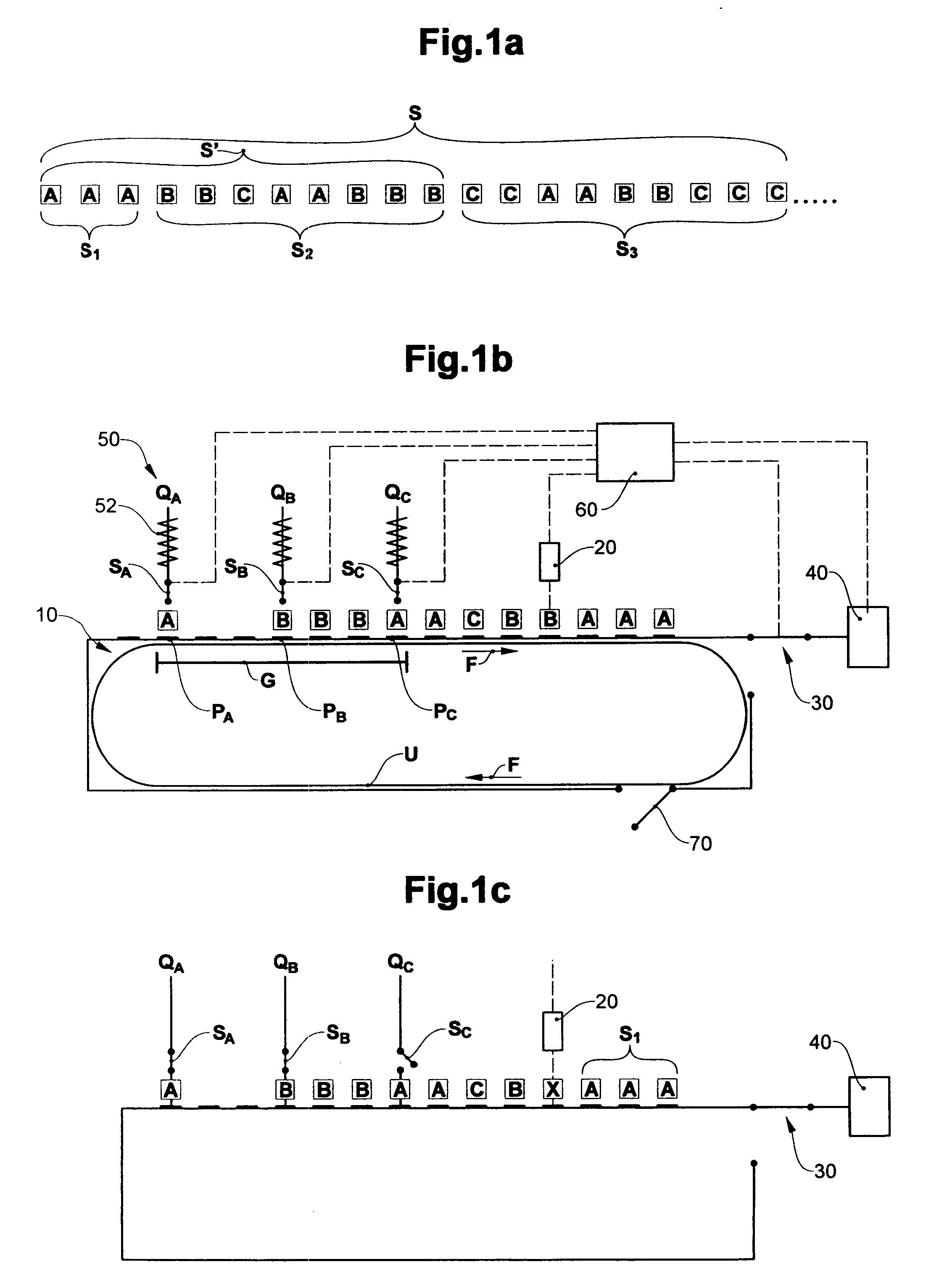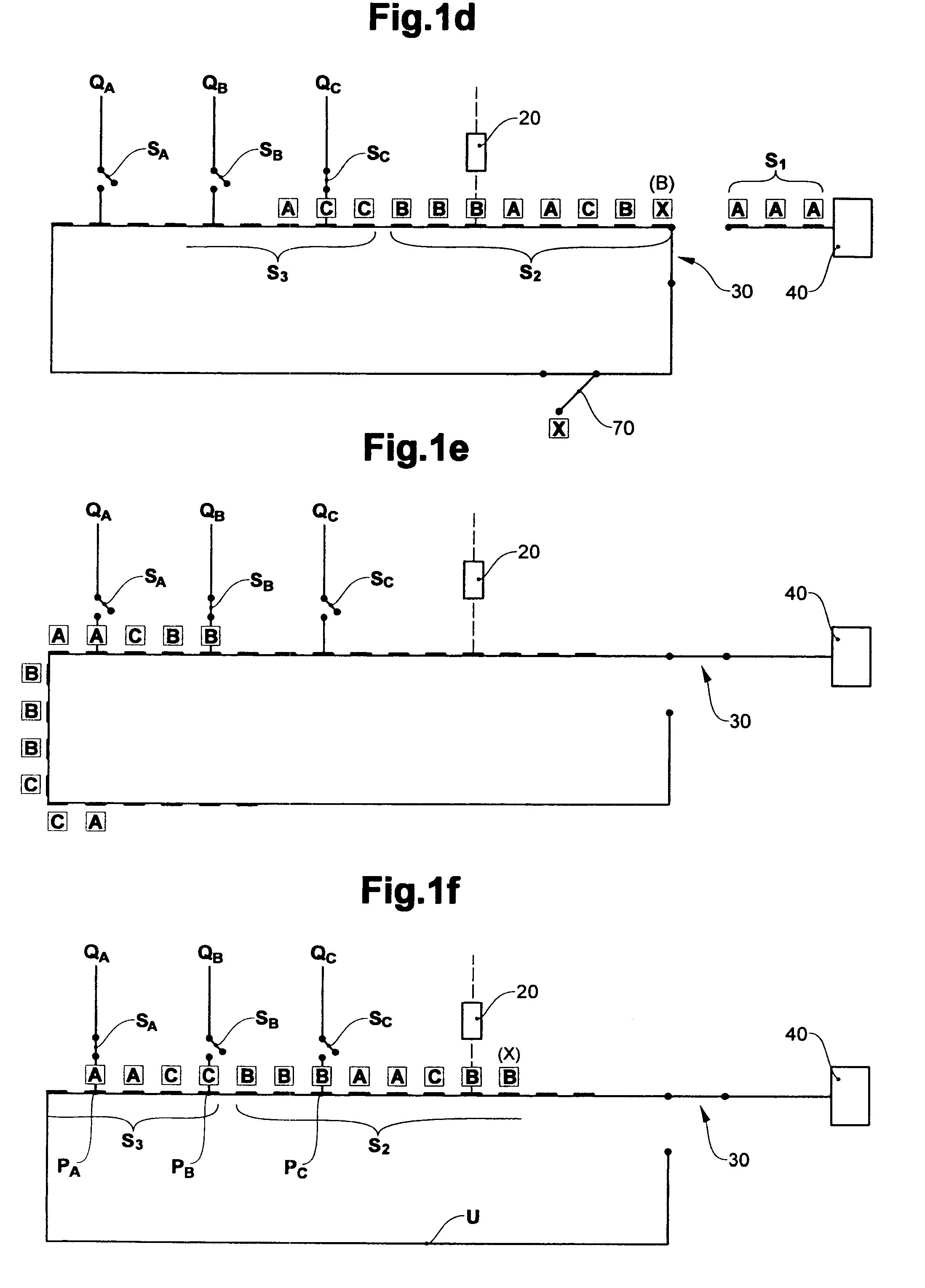Method and device for creating a flow of flat products in a predefined sequence
a technology of flat products and sequences, applied in the field of conveyor technology and processing technology of flat products, can solve the problems of inability to create infinitely long sequences, inability to match, and inability to correct, and the known method is therefore not suitable for creating infinitely long sequences
- Summary
- Abstract
- Description
- Claims
- Application Information
AI Technical Summary
Benefits of technology
Problems solved by technology
Method used
Image
Examples
Embodiment Construction
[0032]FIG. 1a-f schematically shows the construction of the device according to the invention and the sequence of the method according to the invention. FIG. 1a shows an example of a cut-out of a sequence S of products to be created. The sequence here, by way of example, comprises three different products A, B, C in a different number, here for example from the left to the right: 3×A, 2×B, 1×C, 2×A, 3×B, 2×C, 2×A, 2×B, 3×C . . . .
[0033]This example concerns a sequence of products A, B, C which are to be laid down one after the other as single products. The same principle is applicable for the case in which the sequence comprises small groups, e.g. (ABC), (AB), of products placed on top of one another. In this case the control of the feed units (time of product release) is adjusted in such a way that the products are not placed one after the other, but on top of one another.
[0034]The products A, B, C originate from a product feed 50 with three product sources QA, QB, QC, which at rel...
PUM
| Property | Measurement | Unit |
|---|---|---|
| time delay | aaaaa | aaaaa |
| time | aaaaa | aaaaa |
| length | aaaaa | aaaaa |
Abstract
Description
Claims
Application Information
 Login to View More
Login to View More - R&D
- Intellectual Property
- Life Sciences
- Materials
- Tech Scout
- Unparalleled Data Quality
- Higher Quality Content
- 60% Fewer Hallucinations
Browse by: Latest US Patents, China's latest patents, Technical Efficacy Thesaurus, Application Domain, Technology Topic, Popular Technical Reports.
© 2025 PatSnap. All rights reserved.Legal|Privacy policy|Modern Slavery Act Transparency Statement|Sitemap|About US| Contact US: help@patsnap.com



